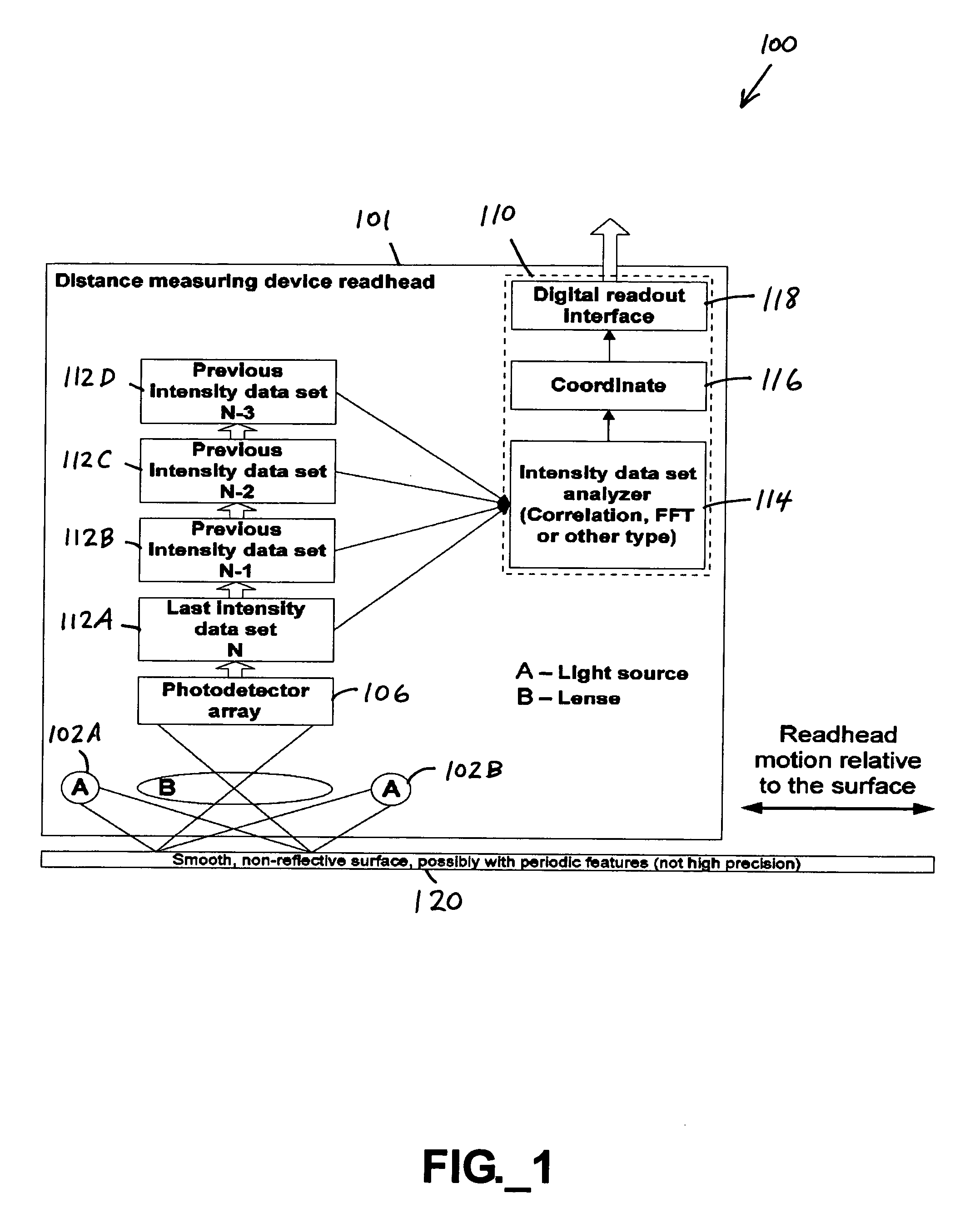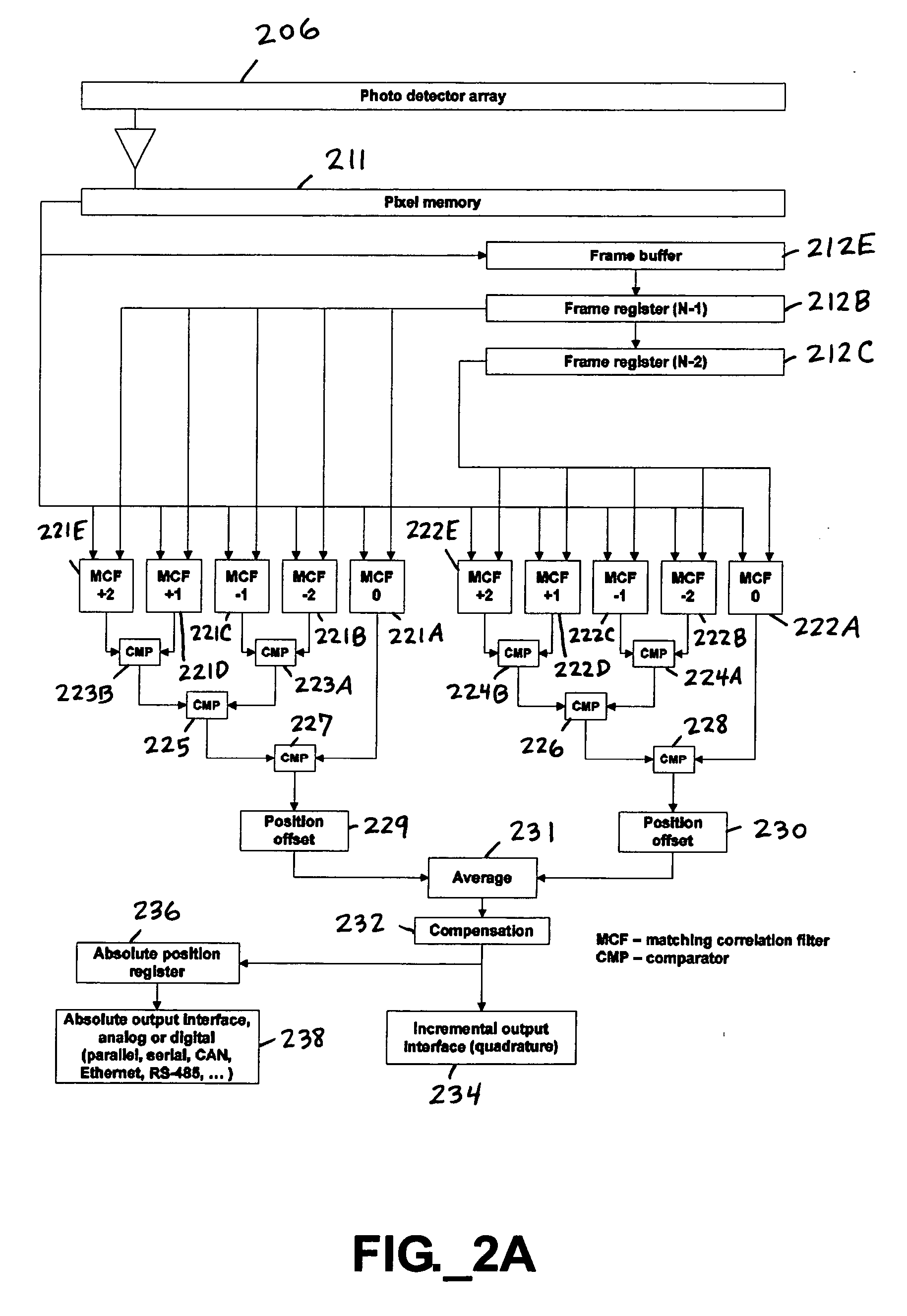Positional sensing system and method
a sensing system and sensing technology, applied in the field of positional sensing system and method, can solve the problems of limiting the utility of conventional grating-based encoders, high cost of calibrated gratings, and affecting the use of optical detection devices
- Summary
- Abstract
- Description
- Claims
- Application Information
AI Technical Summary
Problems solved by technology
Method used
Image
Examples
Embodiment Construction
[0026] Certain embodiments of the invention are directed to positional sensing systems utilizing real-time pattern analysis and positional determination, utilizing an uncalibrated patterned surface. The term “uncalibrated patterned surface” as used herein refers to any surface having surface features, whether inherent or introduced, perceptible (e.g., at a sufficient signal-to-noise ratio) to an imaging device, without requiring calibration and present in amount or spatial density sufficient to provide a desired dimensional resolution utilizing the inventive positional sensing systems and methods described herein. The attainable resolution of the positional sensing systems described herein depends in part on the quality and perceptibility of the surface features. The patterned surface may include a patterned film, such as a self-adhesive patterned film, applied to an underlying surface. The pattern may be regular or irregular, with the patterned surface preferably consisting of suba...
PUM
| Property | Measurement | Unit |
|---|---|---|
| viewing angle | aaaaa | aaaaa |
| incidence angle | aaaaa | aaaaa |
| displacement | aaaaa | aaaaa |
Abstract
Description
Claims
Application Information
 Login to View More
Login to View More - R&D
- Intellectual Property
- Life Sciences
- Materials
- Tech Scout
- Unparalleled Data Quality
- Higher Quality Content
- 60% Fewer Hallucinations
Browse by: Latest US Patents, China's latest patents, Technical Efficacy Thesaurus, Application Domain, Technology Topic, Popular Technical Reports.
© 2025 PatSnap. All rights reserved.Legal|Privacy policy|Modern Slavery Act Transparency Statement|Sitemap|About US| Contact US: help@patsnap.com



